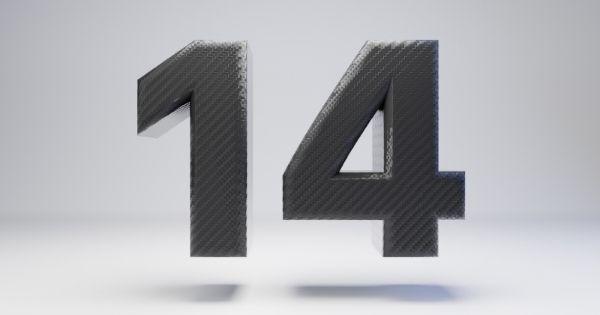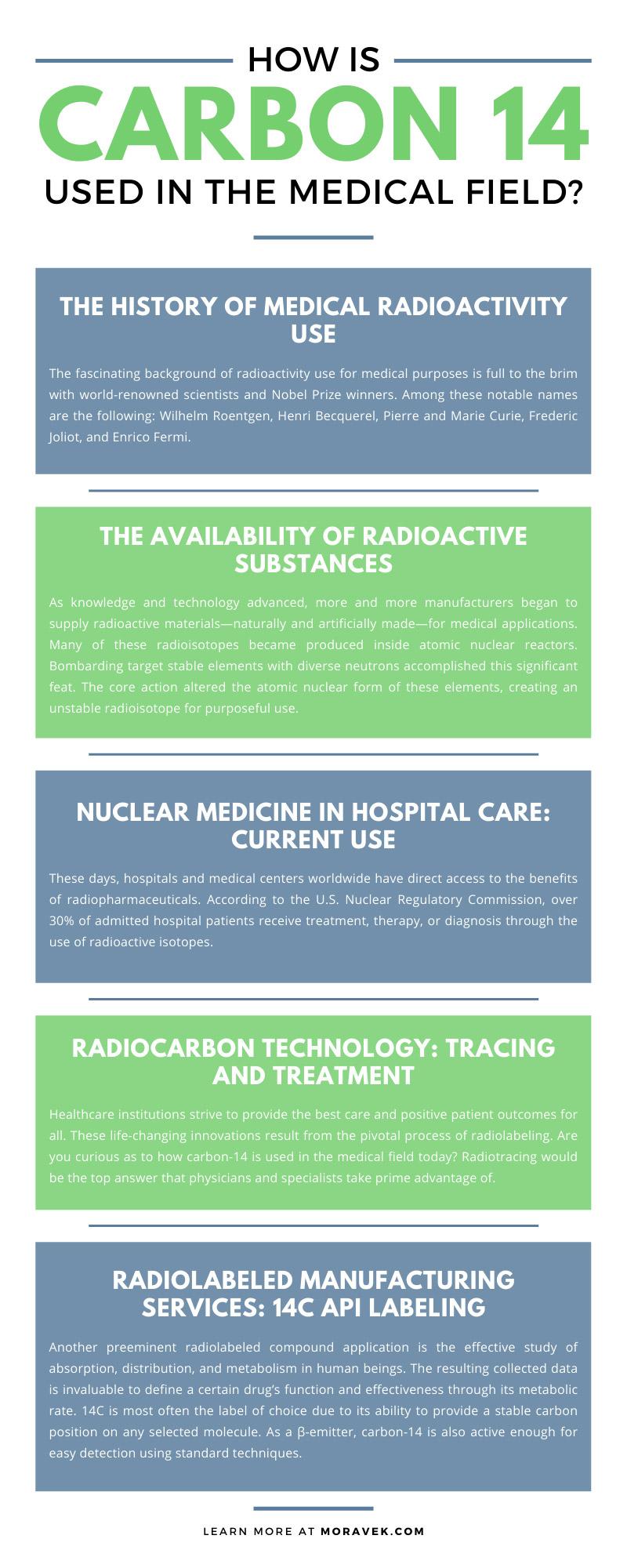
Carbon is one of the most abundant elements existing on our planet—one’s existence that humanity’s known about since ancient times. Many of the millions of identifiable carbon compounds in the world are essential to life as we know it. Matter-of-fact, an entire branch of chemistry exclusively devotes its studies to carbon-containing compound composition and reaction: organic chemistry.
But there's more to carbon's universal story. This stable sixth element on the periodic table contains three diverse isotopic forms—carbon 13, carbon-13, and carbon-14. Each is found naturally on Earth, but only one is uniquely unstable. The most generally-recognizable isotope is carbon-14 due to its radioactivity, with a notable half-life of 5,730 years. For present-day research, the unmistakably-slow decay rate of carbon-14 is invaluable compared to its common radioactive cousins.
The wide majority are aware of this radioisotope’s scientific use for carbon dating. The half-life of the radioisotope remains unaltered by external environmental factors, causing the isotope to act as an internal clock to establish the age of assorted objects. But what about its concentrated medical applications? How is carbon-14 used uniquely in the medical field? Due to the fundamental function of its unique characteristics, this isotope is integral to radiopharmaceutical use in nuclear medicine. Let’s examine closer the historical applications of 14C in this specialty field. Here’s a look into how these radioisotopes support research, diagnosis, and therapy in health care.
The History of Medical Radioactivity Use
The fascinating background of radioactivity use for medical purposes is full to the brim with world-renowned scientists and Nobel Prize winners. Among these notable names are the following: Wilhelm Roentgen, Henri Becquerel, Pierre and Marie Curie, Frederic Joliot, and Enrico Fermi.
The discoveries of these intellectual physicists and chemists in the 20th century significantly influenced the future of medicine—and peacetime applications of atomic energy. The incredible buildup of their own research made the distribution of distinctive radioactive isotopic species possible. Qualified medical researchers and healthcare professionals could obtain batches of radioisotopes—such as the versatile carbon-14—from laboratories and facilities.
The Availability of Radioactive Substances
As knowledge and technology advanced, more and more manufacturers began to supply radioactive materials—naturally and artificially made—for medical applications. Many of these radioisotopes became produced inside atomic nuclear reactors. Bombarding target stable elements with diverse neutrons accomplished this significant feat. The core action altered the atomic nuclear form of these elements, creating an unstable radioisotope for purposeful use. Slowly but surely, reliable treatment and diagnosis methods became available with these radioactive sources as the years went by.
Nuclear Medicine in Hospital Care: Current Use
These days, hospitals and medical centers worldwide have direct access to the benefits of radiopharmaceuticals. According to the U.S. Nuclear Regulatory Commission, over 30% of admitted hospital patients receive treatment, therapy, or diagnosis through the use of radioactive isotopes.
In the grand majority of sizable hospitals in the country today, you’ll find a separate department for nuclear or radiation medicine. This department handles the effective utilization and safe handling of radionuclides. Specialized environmental precautions, post-use operating procedures, and waste disposal ensure that radiation exposure stays within safety limits. Millions upon millions of radiotherapy procedures safely occur in medical clinics and hospitals each year to detect, identify, and treat prevalent diseases and conditions.
Various hospitals contain their own cyclotrons—aka particle accelerators—to produce radiopharmaceuticals with half-lives of shortened seconds or mere minutes. Other leading research and university hospitals have clinical positron emission technology (PET) centers for new medical radiotracer and implementation technique discoveries. Not to mention drug research and development companies who require manufacturing services for clinical trials of professional-grade pharmaceuticals. Such organizations mainly utilize carbon-14 radiolabeling and synthesis for their tracing studies.
Radiocarbon Technology: Tracing and Treatment
Healthcare institutions strive to provide the best care and positive patient outcomes for all. These life-changing innovations result from the pivotal process of radiolabeling. Are you curious as to how carbon-14 is used in the medical field today? Radiotracing would be the top answer that physicians and specialists take prime advantage of.
Extensive developments in radiotracer applications and technologies continue to impact medical treatment and diagnosis for the better. Radiolabeling is the attachment of a radioisotope to a chemical compound for purposeful radiotracing.
What Is Radiotracing vs. Radiotherapy?
Medical researchers and professionals utilize radiolabeled pharmaceuticals in several key approaches. Ergo, radiolabeled compound use plays a pivotal role in biomedical science advancement. Radioisotopes have two main functions: either provision of a radioactive energy source or a radioactive tracer source.
Tracers work in the medical field to critically identify target marker materials in the human body. One common application is detecting the size, shape, and presence of abnormalities in body organs or structures. Using an injectable radiotracer, gamma-ray scanners or imaging machines detect, pinpoint, and analyze internal areas for diagnosis. This same method assists the pinpointing of exact locations in the body that require specialized treatment.
Conversely, radiotherapy is the application of correctly calculated and administered doses of radiation through metabolic systems. Such therapy utilizes radioisotopes to emit intentional energy to the source of symptoms. Proper energy release will induce changes in molecular composition in targeted body cells. Hence, this type of nuclear medicine is a commonplace technique for oncology. Many successful cancer treatments occur due to knowledgeably applied radioactivity.
Radiolabeled Manufacturing Services: 14C API Labeling
Another preeminent radiolabeled compound application is the effective study of absorption, distribution, and metabolism in human beings. The resulting collected data is invaluable to define a certain drug’s function and effectiveness through its metabolic rate. 14C is most often the label of choice due to its ability to provide a stable carbon position on any selected molecule. As a β-emitter, carbon-14 is also active enough for easy detection using standard techniques.
For those in the pharmaceutical sector of the medical field, the preparation of custom radiolabeled active pharmaceutical ingredients (APIs) is key to the success of clinical trials. Numerous radioisotopes are available in simplified ionic compounds, although the general need for synthesized radioactive organic compounds increases expeditiously. Radiolabeling knowledge and experienced expertise are key to manufacturing quality carbon-14 compounds suitable for use in clinical trials.
Moravek offers API pharmaceutical manufacturing services that are up to standards with current Good Manufacturing Practices. Our cGMP carbon-14 labeled APIs come with an exhaustive analytical data package and record thoroughly reviewed by our QA department. Learn more about Moravek quality for safe and effective radioisotopic use in the medical field today.

